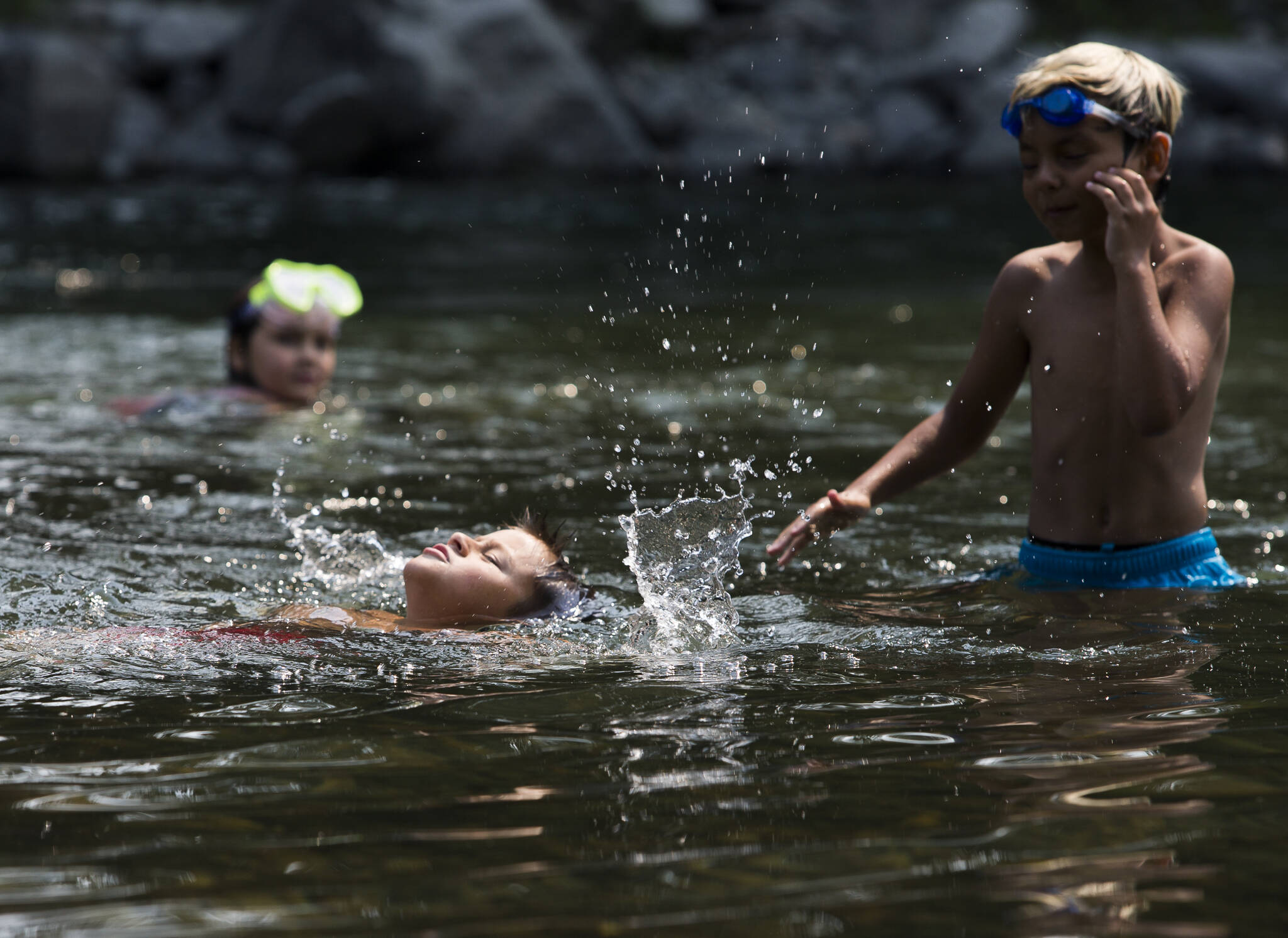By The Herald Editorial Board
Along with a lot of water, Snohomish County’s two major river basins — the Snohomish and the Stillaguamish — also hold a lot of stories.
A coalition of river advocates, including farmers, environmental groups, fishers, hunters and recreational users, tribes, county and state agencies and others — the Sustainable Lands Strategy — is hoping to get some of the stories of both basins flowing from local residents who have first-hand experience and knowledge about the rivers, how they benefit us, and how we can protect and preserve them.
Sustainable Lands Strategy is asking for 12 participants — six from each of the two river basins — who can share their stories through short videos, providing their memories, perspectives and images of their river and its importance in their lives. The digital storytelling, called Tales from Two Rivers, will then be shared with fellow county residents, local officials, lawmakers and others during upcoming “film festivals” as well as on websites and social media.
Both basins have stories that need to be told, said Kari Quaas, the community engagement project manager for the Snohomish Conservation District, a partner in Sustainable Lands Strategy. And the effort wants those stories told from perspectives that aren’t always heard but yet are often closest to the river.
“We would like them to just have a story,” Quaas said last week. “Because real people telling their stories are way more interesting than a government official saying, ‘Hey, we have a problem here; we’d like to fix it.’”
If you don’t think of yourself as a documentary filmmaker, don’t be intimidated. What’s needed is a good computer, a reliable internet connection, a smartphone, some photos or video and your story. A “snowball” microphone will be provided to ensure good audio quality.
Participants will be asked to commit to five online digital storytelling training sessions, coached by staff from Creative Narrations, from noon to 2 p.m. on Jan. 24, 26, 28, 31 and Feb. 4, and time apart from the sessions to write a script, record the story and assemble images and materials. Participants will be paid $375 for attending all five sessions.
The project has lined up three participants, so far, Quaas said, including a farmer on Ebey Slough, a tribal employee and a landowner who works with a diking district. Those three will have stories regarding the Snohomish River, but storytellers for the Stillaguamish are needed also, Quaas said.
The project also is hoping for a range of perspectives, including farmers, property owners, tribal members, recreational users, fishers and others.
“It could be someone who grew up fishing on the Stillaguamish and says, ‘Here are the changes I’ve seen over time,’” Quaas said.
Or it could be someone, she said, who has had to deal with flooding, washed-out roads and lost property over the years and says, “every year we get these stronger storms coming through and I don’t know if my house is going to be standing here in five years.”
After some final video editing by Creative Narrations, Sustainable Lands Strategy hopes to schedule a showing of the videos at University of Washington-Bothell in early March and at a second event later this summer with introductions of those who have shared their stories. If covid prevents an in-person event, an online event will be scheduled.
“But we really want a live audience and some popcorn,” Quaas said.
The Snohomish and Stillaguamish river basins, which include the steams and smaller rivers that flow into them, cover nearly the entire county. And the two rivers are vital to the county’s agriculture, natural resources, fish and wildlife, economy and our communities. At the same time, we’re learning the effect that climate change is having on those basins, the impacts of flooding and on fish runs, and the efforts to better manage how we live alongside those rivers and manage how activities upstream effect those downstream.
Efforts, such as Floodplains by Design, a statewide public-private partnership that advocates for projects to address flooding and habitat needs, continues work that has been ongoing since 2013.
That work, along with other state and county projects — because it has been organized cooperatively with the range of stakeholders — is returning benefits through flood loss prevention, improved habitat for fisheries, preservation of the environment and more recreational opportunities.
“There’s a lot of work happening,” Quaas said. “We just need to tell the story better.”
Tell your river story
Sustainable Lands Strategy is seeking 12 people — six from each river basin — to tell their stories in five-minute videos about their river and their connection to it. Participants don’t necessarily have to live in the county, but stories need to have a connection to the Stillaguamish or Snohomish River.
Applicants must commit to online training sessions on Jan. 24, 26, 28, 31 and Feb. 4, and must apply by Jan. 17 to Kari Quaas at kquaas@snohomishcd.org or Lindsey Desmul at lindsey.desmul@dfw.wa.gov.
For more information go to www.farmfishflood.org/blog/tell-your-story.
Talk to us
> Give us your news tips.
> Send us a letter to the editor.
> More Herald contact information.

























